The Panasonic EZ952 (also marketed as the EZ950 series elsewhere in Europe) is the Japanese manufacturer’s midrange OLED TV for 2017, sitting one rung below the flagship EZ1002/ EZ1000 series. Whereas the latter is geared towards video professionals with its uploadable 3D LUT (lookup table) among other added features, the former is the more affordable model most consumers would consider buying.
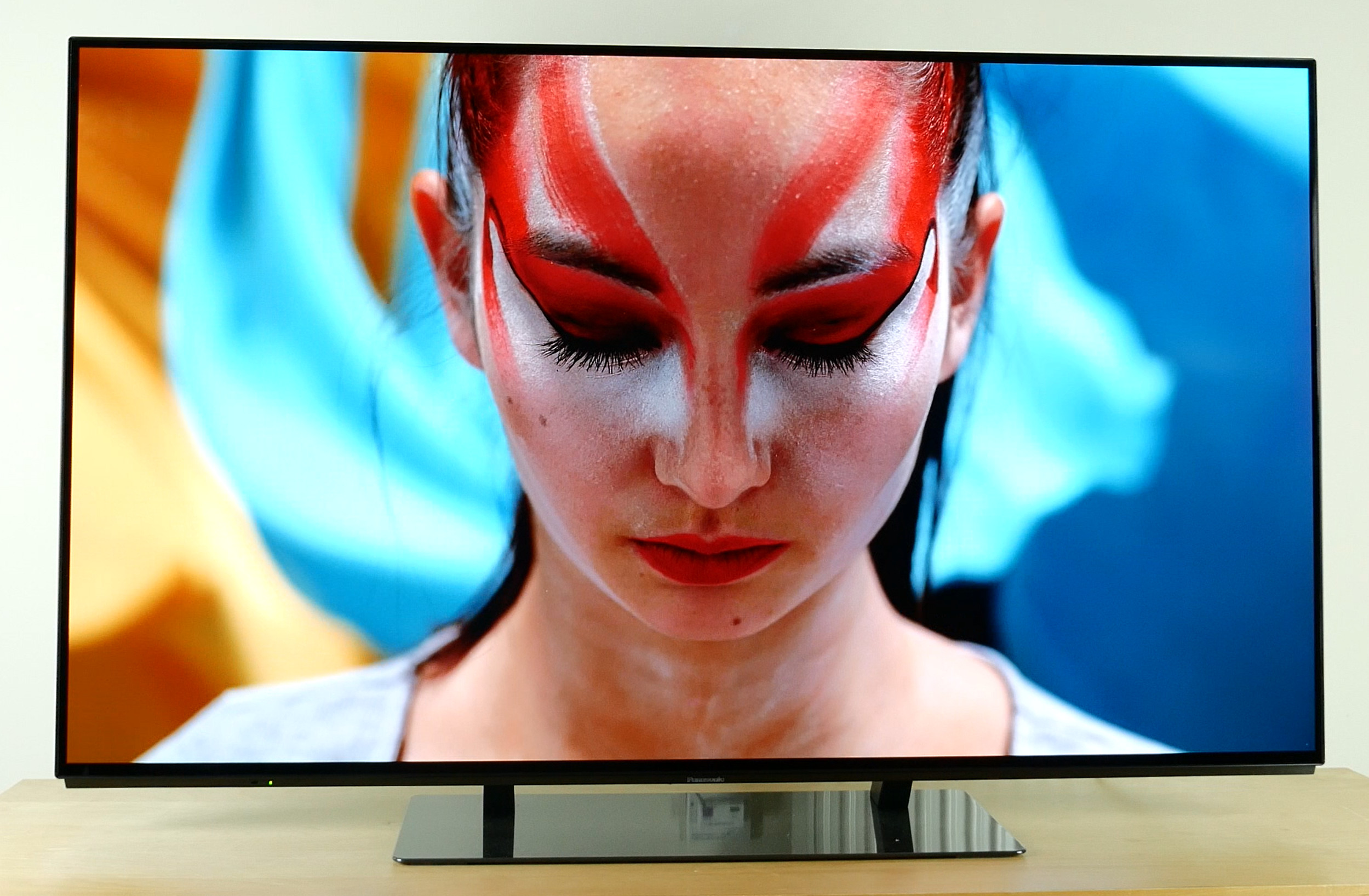
Two screen sizes are available, namely the 55-inch Panasonic TX-55EZ952B (which is the subject of today’s review) and the 65-inch TX-65EZ952B. Compared with the step-up TX-65EZ1002B, the EZ952s lack the Technics-tuned “Dynamic Blade Speaker” soundbar, “Absolute Black” ambient-light-rejecting filter, and user-uploadable 3D LUT function through their USB/ SD slots.
However, from our testing, most aspects of picture quality are very similar between the two, underpinned by a WRGB OLED panel (sourced from LG Display) with native UHD resolution of 3840×2160, as well as dual Ultra HD Premium and THX 4K certifications. Here are the strengths and weaknesses of the Panasonic 55EZ952 according to our tests.
Among all TV brands, Panasonic has been the one which places the most emphasis on colour fidelity, and this ethos is clearly evident on the EZ952B. Once we put the Panasonic TX55EZ952B in its most accurate picture preset and watched some content even before touching any of the picture-affecting controls, the first word that came to mind was none other than “natural”.
And the television’s comprehensive array of calibration controls allowed us to further tune the greyscale and colours to truly impressive levels (accounting for our viewing habits and environment), as you can see from the graphs below:
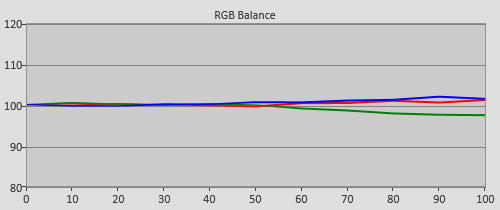 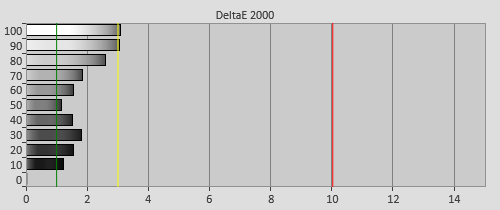 |
| Pre-calibration [Professional] RGB tracking and delta errors (dEs) |
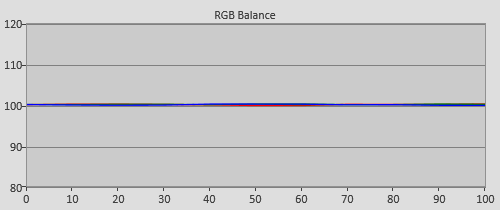 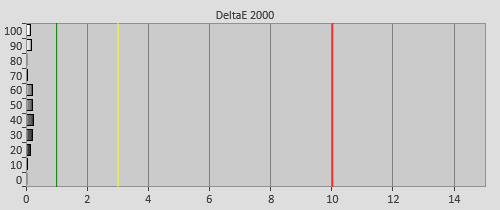 |
| Post-calibration RGB tracking and dEs in [Professional] mode |
![Pre-calibrated Gamma tracking in [Professional] mode](https://www.hdtvtest.co.uk/news/wp-content/uploads/2018/04/uhdtv_Panasonic-TX55EZ952B_pre-gamma.png) | ![Post-calibrated Gamma tracking in [Professional] mode](https://www.hdtvtest.co.uk/news/wp-content/uploads/2018/04/uhdtv_Panasonic-TX55EZ952B_post-gamma.png) |
| Pre-calibration gamma tracking (2.51) | Post-calibration gamma tracking (2.4) |
![Post-calibration Colour saturation tracking in [Professional] mode](https://www.hdtvtest.co.uk/news/wp-content/uploads/2018/04/uhdtv_Panasonic-TX55EZ952B_post-strack.jpg) |
| Post-calibration colour saturation tracking |
![Post-calibration colour errors in [Professional] mode](https://www.hdtvtest.co.uk/news/wp-content/uploads/2018/04/uhdtv_Panasonic-TX55EZ952B_post-strack-de.png) |
| Post-calibration colour errors (<3 not appreciable to the eye) |
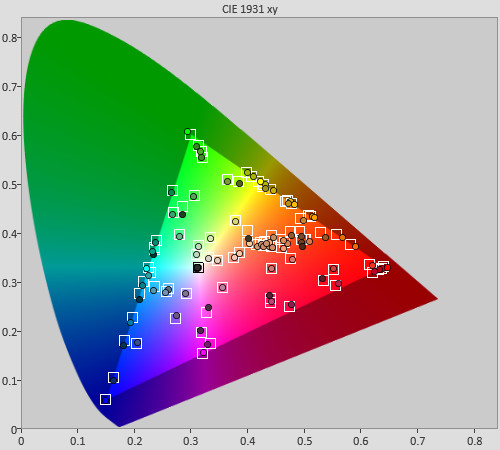 |
| Post-calibration Colour Checker SG test |
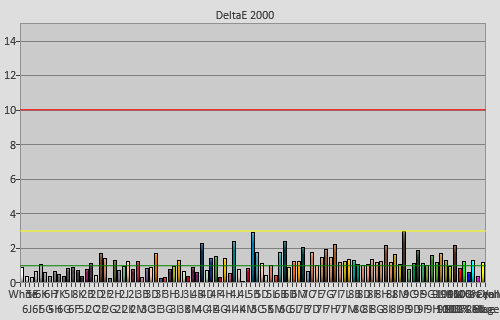 |
| Post-calibration Colour Checker SG errors (<3 not appreciable to the eye) |
If we had to nitpick, although none of the 140 patches measured in the Colour Checker SG chart exhibited inaccuracies that exceeded the humanly perceptible threshold of delta error (dE) 3, the Panasonic TX-55EZ952B’s average dEs were higher than those measured on the top-end EZ1002.
Also, the default out-of-the-box values on our 55in EZ952 review unit were causing some black crush, requiring adjustments to the [Brightness] and [10IRE Gamma] settings to restore shadow detail. We’re not sure if this anomaly was due to a panel-to-panel variance (i.e. specific to our sample), firmware version or a material difference between the EZ952 and EZ1002, but proper calibration took care of it in any case.
Like all consumer OLED TVs to date, the Panasonic 55EZ952B is a sample-and-hold display, so unsurprisingly its baseline motion resolution came in at an expected 300 lines based on the horizontally scrolling lines in Chapter 31 of the FPD Benchmark Software test disc. What elevates the EZ952/ EZ950 above competing 2017 OLEDs is how customisable and effective its motion-enhancing technologies are.
First, there’s motion interpolation which can be engaged via the [Intelligent Frame Creation] setting. In addition to the usual intensities of “Min“, “Mid” and “Max” besides “Off“, there’s an [IFC] “Custom” mode that permits independent tweaking of the deblur and dejudder components, similar to the [TruMotion] “User” feature on LG OLED televisions (and the [Auto Motion Plus] “Custom” function on Samsung TVs for that matter). In other words, higher motion resolution can be achieved without introducing soap opera effect (SOE) to 24fps films. The same cannot be said of Sony’s A1 OLED whose motion interpolation (the [Smoothness] slider under the [Motionflow] “Custom” submenu) would incur SOE however slight.
![Optimised [Intelligent Frame Creation]](https://www.hdtvtest.co.uk/news/wp-content/uploads/2018/04/uhdtv_Panasonic-TX55EZ952B_ifc-custom.jpg) | ![[Clear Motion] on](https://www.hdtvtest.co.uk/news/wp-content/uploads/2018/04/uhdtv_Panasonic-TX55EZ952B_clear-motion.jpg) |
| Optimised [Intelligent Frame Creation] | [Clear Motion] or BFI on |
Another motion-boosting tech aboard the TX55EZ952 is black frame insertion (BFI) which inserts black frames between the original video frames – simulating an impulse-based display – to clear our retinal persistence and improve motion clarity. Due to how BFI works, there would inevitably be a drop in brightness and an increase in flicker, but the upside is that you can get sharper motion without SOE or interpolation artefacts (assuming you can tolerate the flicker at different frame rates).
LG OLEDs don’t offer BFI, and whilst the Sony A1/ A1E does, it’s more flickery than the Panasonic for 24Hz and 50Hz sources. Overall, we think Panasonic’s 2017 OLED TVs provide the most usable motion configurations to satisfy different demands in various types of content.
Note: Panasonic’s BFI algorithm appeared to operate at 60Hz (therefore resulting in less flicker than Sony’s method), so slow panning shots in 24p films would exhibit some telecinic judder. (Thanks Ray K for the heads up!) However, we generally refrain from using BFI for watching movies anyway, since 24fps content is inherently slightly blurrier to give that surreal, dreamy look we associate with cinema/ film.
The Panasonic TX-55EZ952 features the same tone-mapping approach found on the EZ1002B which so impressed us, striking a wonderful balance between maintaining specular highlight detail and overall brightness (Average Picture Level or APL) when displaying HDR10 movies that are mastered to beyond the set’s peak luminance capabilities. There’s a new [HDR Brightness Enhancer] control which gave a small boost in midtones for daytime HDR viewing (a misnomer in itself) according to our measurements:
Click on the options below to compare PQ EOTF tracking:
1000 nits | 4000 nits | [HDR Brightness Enhancer] on
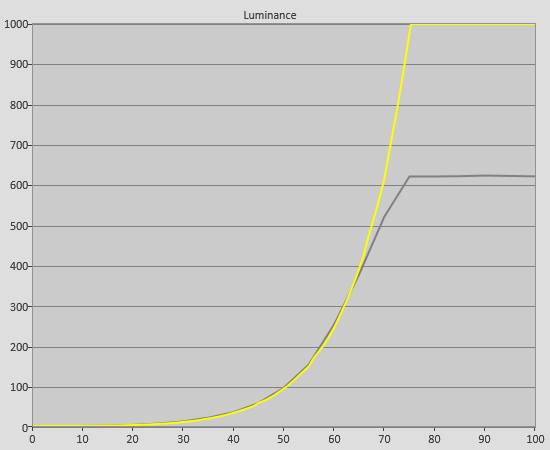
Unlike other TVs which use a similar tone-mapping algorithm, the EZ952 didn’t suffer from excessive posterisation in what should be smooth gradients (for example the skies in The Revenant and The Martian). Since we forgot to mention this in our review of the EZ1002, we would also like to commend Panasonic engineers for implementing automatic switching between the correct picture presets separately for SDR and HDR modes, which is a welcome UX upgrade from last year’s HDR TVs from the company (including the popular DX902/ DX900 series) which require owners to manually change picture modes (if properly calibrated as such) to get the best image quality for SDR vs HDR viewing.
As hinted at the firm’s annual European convention back in February, Panasonic has worked hard to improve gaming responsiveness on its 2017 TVs, and the TX-55EZ952B certainly didn’t disappoint in this regard. With [Game Mode] enabled, input lag measured 26ms in all key video resolutions and formats (1080p, 4K, SDR, HDR).
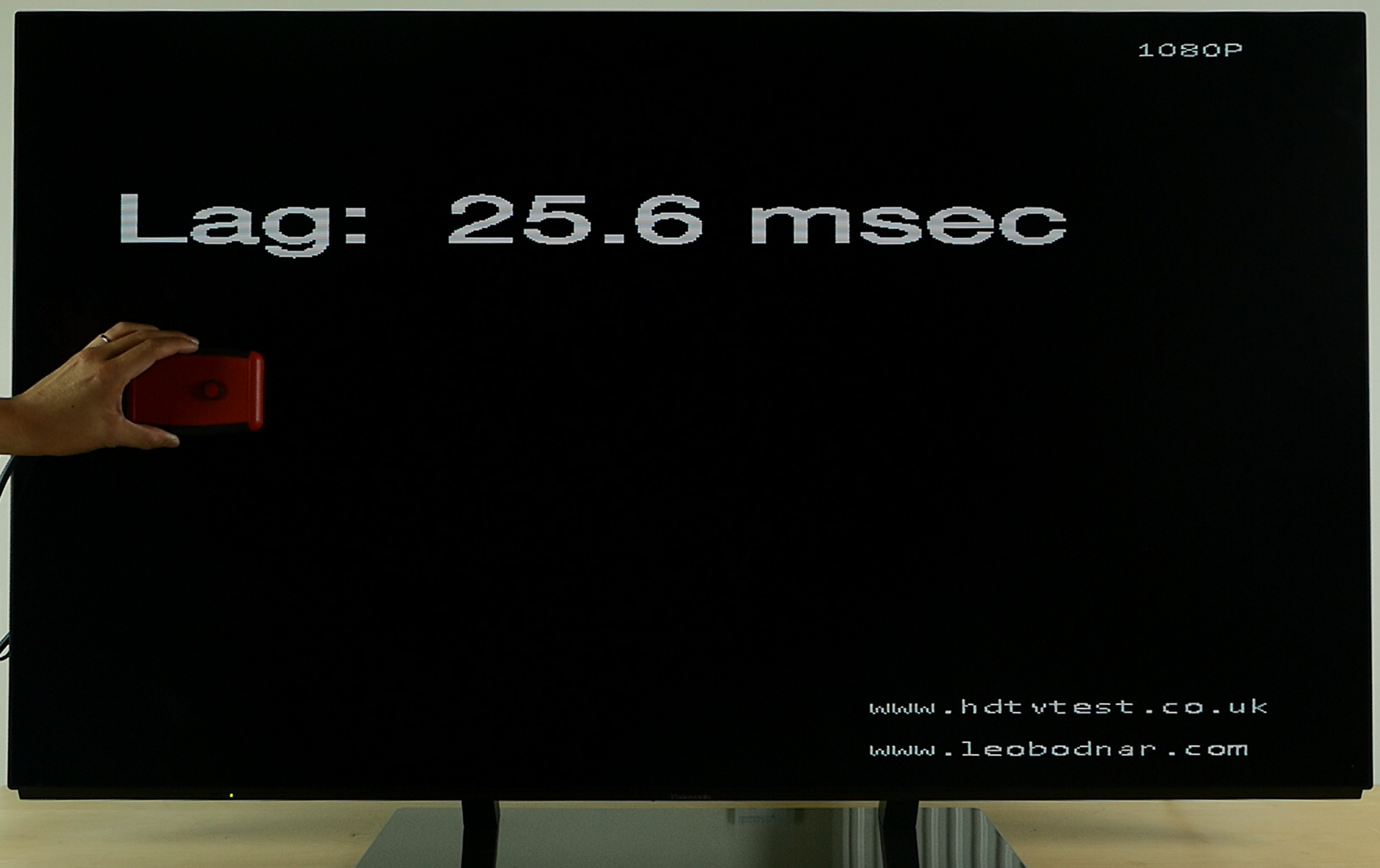 | 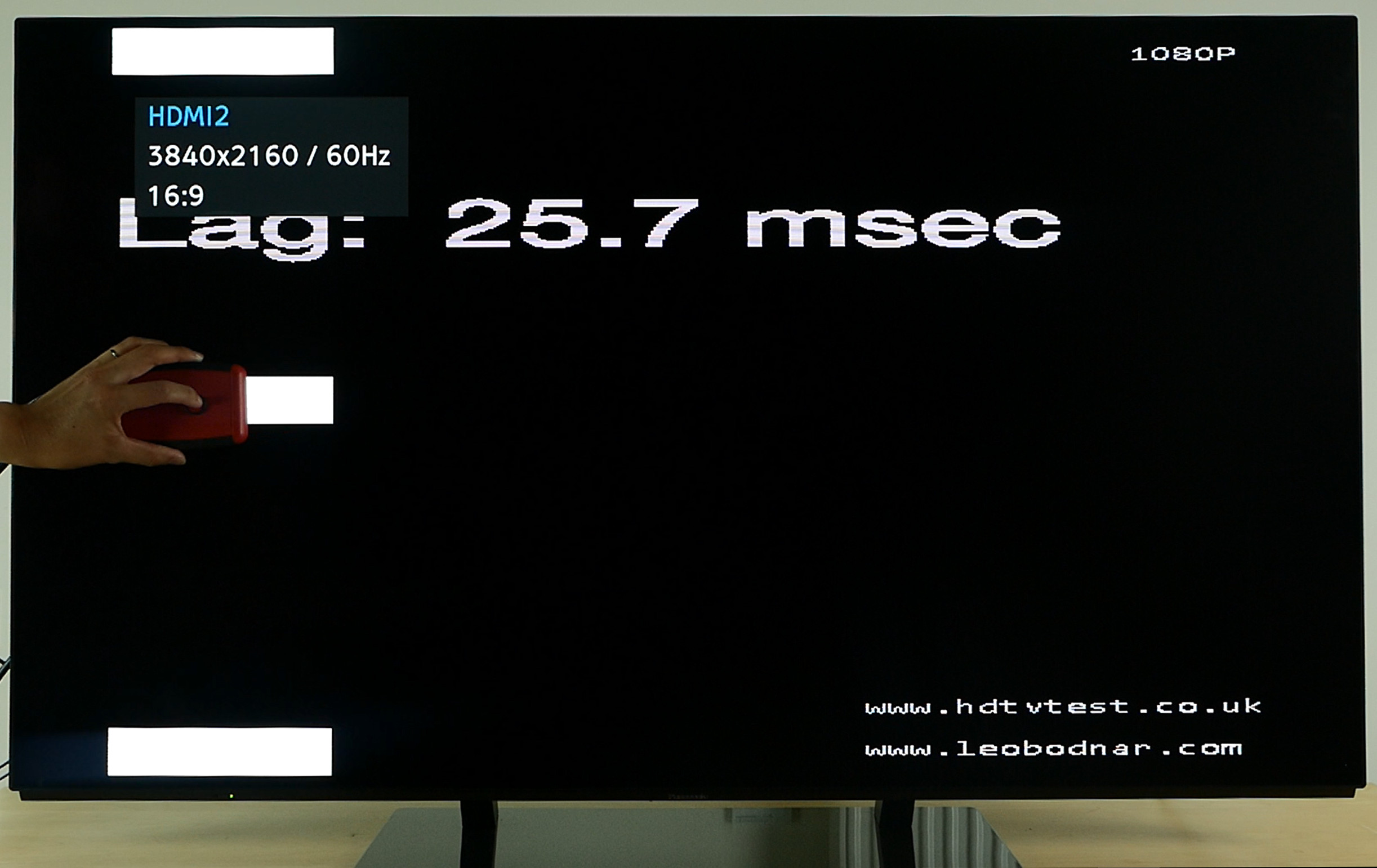 |
| Input lag in 1080p SDR | Input lag in 2160p HDR |
Engaging black frame insertion and the [Pure Direct] modes (for 4:4:4 chroma reproduction) increased latency slightly to 34ms and 36ms (i.e. around half a frame) respectively, which is still eminently playable.
Above-black handling on the EZ952 was on par with other 2017 OLEDs such as the LG B7/ C7, the Sony A1 and Panasonic’s own EZ1002, manifesting less noise, macroblocking and posterisation in darker regions than 2016 models (especially if the source was heavily compressed or bit-starved).
Near-black uniformity is another bugbear for OLED TV owners, and fortunately our Panasonic TX55EZ952B was one of the cleaner examples we’ve seen, with no significant vignetting or thick vertical bands visible on 1% to 4% above-black full-field rasters when inspected in a pitch-black room. OLED’s telltale thin vertical streaks were still present on such slides, but we didn’t notice them in real-world viewing throughout our review period. Before you go ahead and extrapolate our findings to the larger 65in TX-65EZ952B, please bear in mind that 55″ OLED televisions tend to have better uniformity than 65-inchers.
This is a limitation that applies to all WRGB OLED TVs (including the Panasonic 55EZ952) so far, none of which could deliver a peak luminance above 800 nits once calibrated to D65 white point on a 10% window (the pattern size specified by the UHD Alliance for Ultra HD Premium accreditation). Post-calibration, we drew 630 nits from our TX-55EZ952B review unit on a 10% windowed pattern, dropping to 125 nits full-field owing to ABL (Automatic Brightness Limiter) circuitry which is commonly implemented on self-emissive displays such as CRTs, plasmas and OLEDs for better heat and power management.
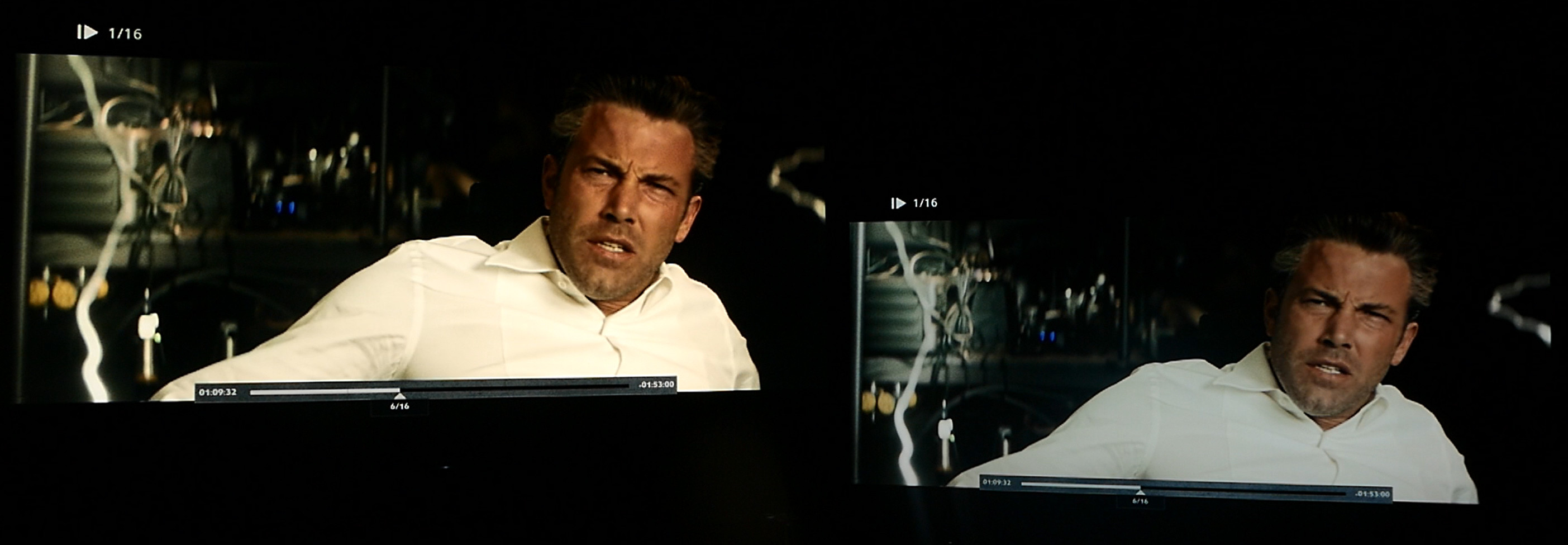 |
| Left: 1200+ nit FALD LED LCD; Right: Panasonic 55EZ952B OLED |
As good as Panasonic’s HDR10 tone-mapping was at retaining specular highlights, bright detail on the EZ952B (and the EZ1002B, LG B7/ C7/ E7/ G7/ W7, Loewe bild 7 and Sony A1 too while we’re at it) still looked compressed and muted compared with full-array local dimming (FALD) LED LCDs which can hit 1200+ nits, particularly in 4000-nit-graded 4k Blu-rays that push the MaxCLL (Maximum Content Light Level) boundaries. It’s just physics really… unavoidable when you’re trying to cram data that’s present between 800 nits to 4000 nits within a headroom that tops out at 800 nits (or lower).
Panasonic personnel have informed us that the EZ952 and EZ1002 will never be Dolby Vision-capable. Although we’re still unsure how much of the theoretical advantages of Dolby Vision’s dynamic metadata system will translate into real-life tangible benefits on a display with already good static metadata tone-mapping, the reality is that many prospective buyers who are considering spending a few grand on a TV will be looking for as much future-proofing as possible regardless of whether Dolby Vision (DV) takes off.
Considering Panasonic’s excellent video processing track record, it’s somewhat surprising to discover this problem on the TX-55EZ952B. It’s likely present on the EZ1000/ EZ1002 which utilises the same HCX2 processor too, but we completely missed it (hey we’re only human) when we reviewed that television, which gives you an indication of how rare and fleeting the bug was.
We spent hours testing and troubleshooting, and we think this is what’s happening. In mixed video/ film material (for example 24p movies with video title overlays) which are not common these days, the HCX2 processor would hesitate for two to three seconds at the start of the scene, causing subtle stuttering and combing artefacts before turning smooth. We experimented with various settings and frame rates, and found that even though setting [Intelligent Frame Creation] to “Mid” or “Max” could smooth out and mask the stutter, only engaging [Game Mode] or the [Pure Direct] modes would disable whatever processing that’s responsible for the frame skips, and eradicate said stuttering. We certainly hope we have given enough clues for Panasonic engineers to fix this issue via a firmware update.
Among the 2017 OLEDs we’ve reviewed, the Panasonic TX-55EZ952 exhibited the strongest magenta tint when its screen was hit by light, since the television’s not equipped with the necessary light-rejecting filter.
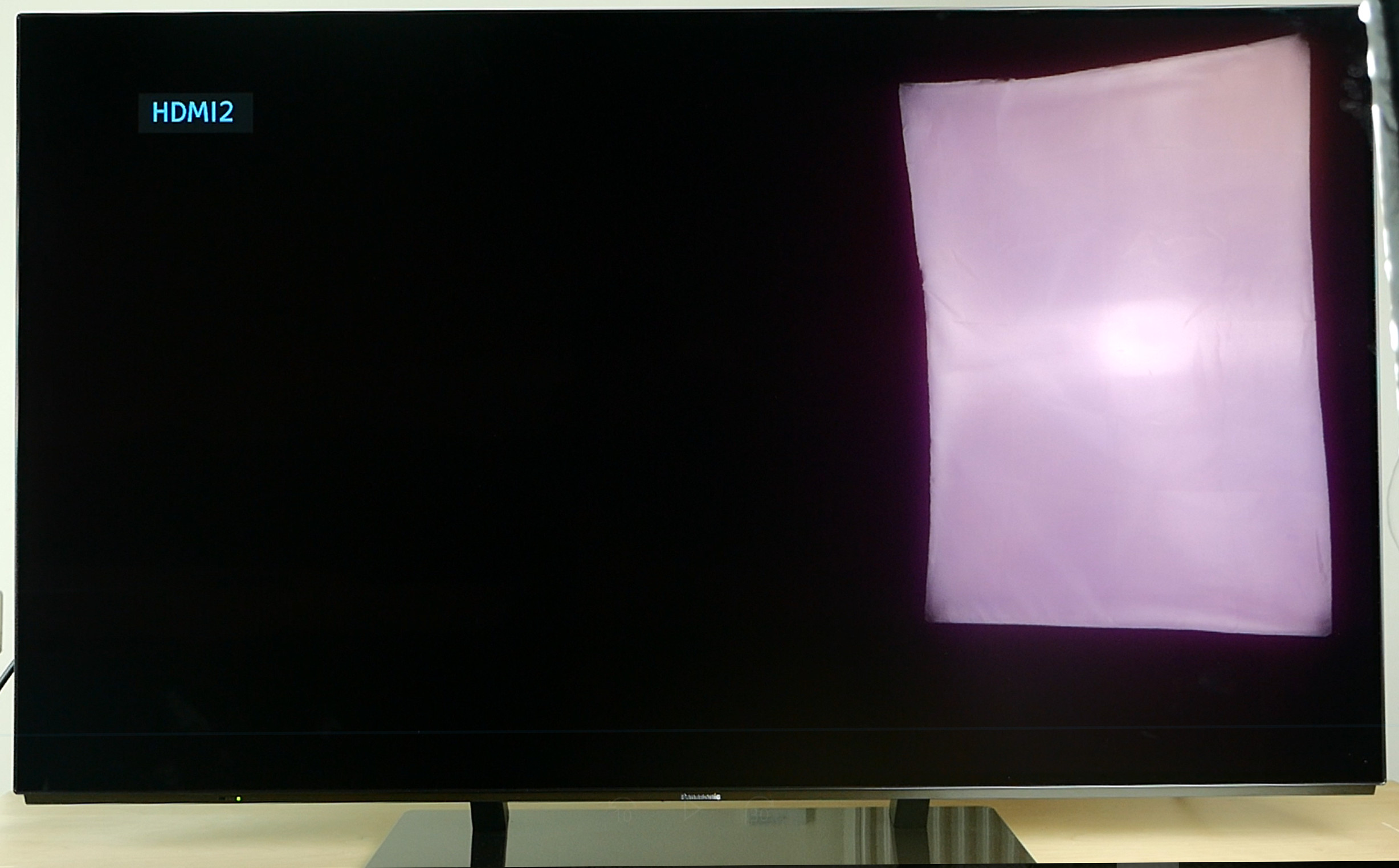
We don’t think this is an issue at all for critical viewing in a low-light environment, but if you’re using the TV in a bright room, just be aware that blacks can take on a purplish cast.
The lack of a magenta-reducing filter has caused some quarters to speculate that the Panasonic EZ950/ EZ952 is using last year’s (2016) OLED panels, but that’s simply not true. While we are of the opinion that there’s little difference between “2016” and “2017” WRGB OLED panels from LG Display (with any improvements coming from iterative manufacturing process), the 55EZ952B’s subpixel structure, spectral power of distribution (SPD) and ABL behaviour all pointed towards the latter. In any case, we reached out to Panasonic to clarify, and here’s their reply:
The EZ952 is using the latest generation of OLED panels.
| Dead pixels | None |
| Screen uniformity | Thin vertical streaks in very dark scenes |
| Overscanning on HDMI | 0% with [16:9 Overscan] and [Pixel Orbiter] set to “Off“ |
| Blacker than black | Passed |
| Calibrated black level (black screen) | 0 cd/m2 |
| Calibrated black level (4×4 ANSI) | 0 cd/m2 |
| Black level retention | Stable |
| Primary chromaticity | Excellent |
| Scaling | Excellent |
| Video mode deinterlacing | Effective jaggies reduction |
| Film mode deinterlacing | Passed 3:2 & 2:2 in SD & HD with correct [Film Cadence Mode] |
| Viewing angle (cone) | 166° |
| Motion resolution | 650 lines with [IFC] or [Clear Motion] on; 300 otherwise |
| Digital noise reduction | Optional; effective when engaged |
| Sharpness | Defeatable edge enhancement |
| Luma/Chroma bandwidth (2D Blu-ray) | Full luma & chroma with [Pure Direct] mode enabled |
| 1080p/24 capability | No judder |
| 2160p/24 capability | No judder |
| Measured panel refresh rate | 120Hz |
| Measured peak brightness | 630 cd/m2 |
| Measured DCI-P3 coverage | 99% |
| Leo Bodnar input lag tester | 26ms with [Game Mode] enabled |
| Full 4:4:4 reproduction (PC) | Yes for 1920×1080 & 3840×2160@60Hz with [Pure Direct] mode engaged |
| Default [Normal] mode | 100 watts |
| Calibrated [Professional] mode | 94 watts |
| HDR [True Cinema] mode | 188 watts |
| Standby | <1 watt |
| Macro photo of subpixel configuration verifying WRGB OLED panel layout |
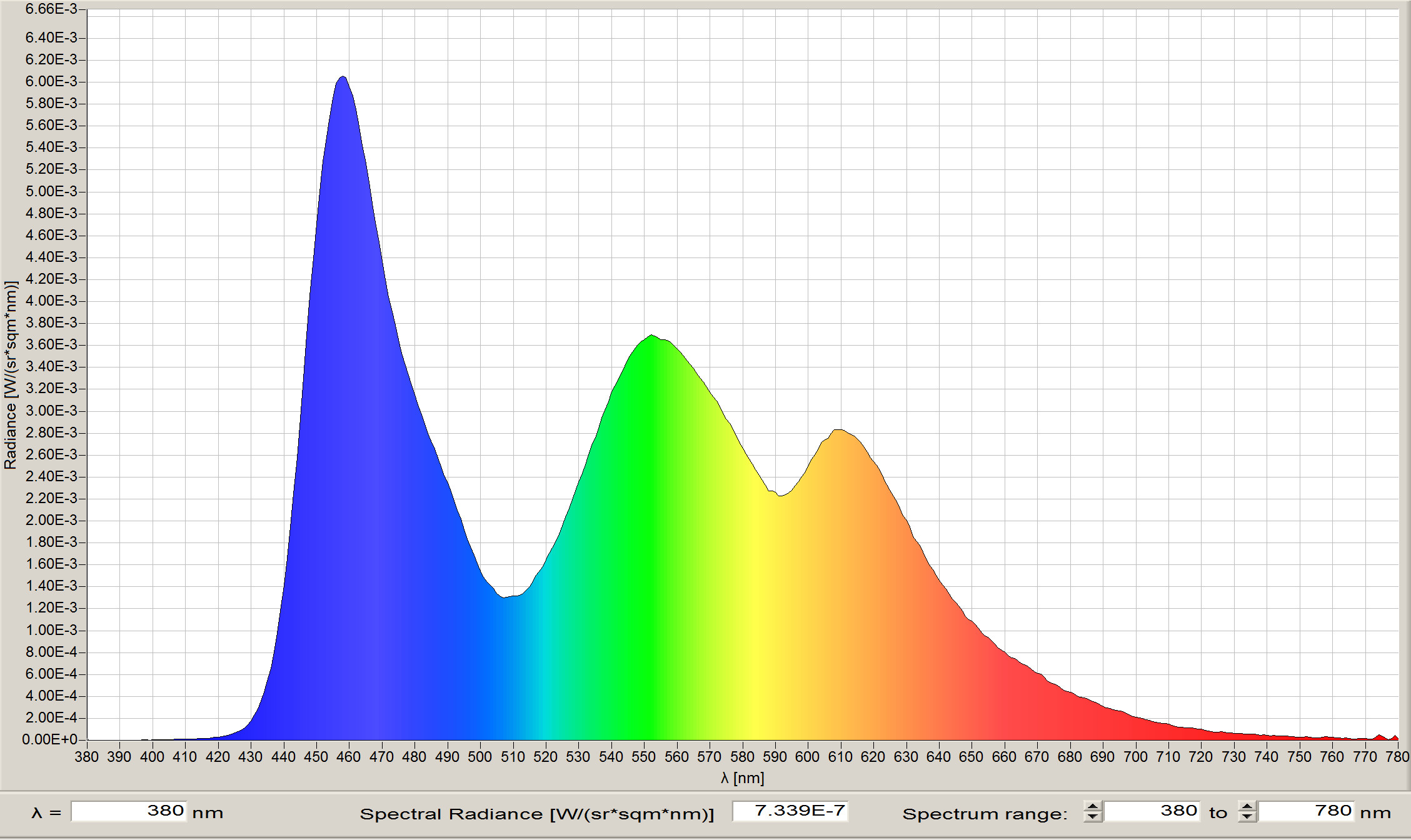 |
| Spectral power of distribution (SPD) captured using a JETI 1511 spectroradiometer |
![Post-calibration HDR colour saturation tracking in [True Cinema] mode](https://www.hdtvtest.co.uk/news/wp-content/uploads/2018/04/uhdtv_Panasonic-TX55EZ952B_dci.jpg) |
| Post-cal colour saturation tracking against DCI-P3 standard in Rec.2020 container |
Delivering much of the outstanding picture quality witnessed on the range-topping EZ1000/ EZ1002B at a lower price point, the Panasonic TX-55EZ952B will appeal greatly to those who value accurate movie reproduction in the home. For most people, the EZ952/ EZ950 simply makes more financial sense: its magenta-tinted coating isn’t really noticeable in a dimly-lit room; most AV enthusiasts will likely have their own external audio solution without needing the EZ1002’s integrated soundbar; and the display provides sufficient calibration controls to achieve highly accurate colours for home viewing even without the uploadable 3D LUT functionality found on the EZ1000.
Other 2017 OLED TVs that compete in a similar price bracket include the LG C7/ B7 and the Sony A1. In terms of image quality, the Panasonic TX55EZ952B’s colour palette is the most natural even out of the box. It also offers the most extensive and usable selection of motion-boosting technologies, though we’re less than impressed by the rare but reproducible stuttering in scenes with mixed film/ video text.
Of course, the LG and Sony OLEDs support Dolby Vision (the latter via an upcoming software update), whereas the Panasonic doesn’t. At this time of writing, we don’t really know how important Dolby Vision (DV) is, but we suspect the answer will reveal itself when Panasonic (and Samsung) executives go over their respective sales figures at the end of the current fiscal year.
If you can see past the lack of Dolby Vision, then the Panasonic EZ952 will reward with its true blacks, pristine colours, excellent video processing, balanced HDR10 tone-mapping, wide viewing angles and low input lag.
Note: If you’re considering buying this television, please support this website by making your purchase from our sponsor Crampton & Moore – call 0113 2446607 and ask for store manager David Conner (who also organises our annual TV shootout event), quoting HDTVTest for advice, best price and first-rate service.
